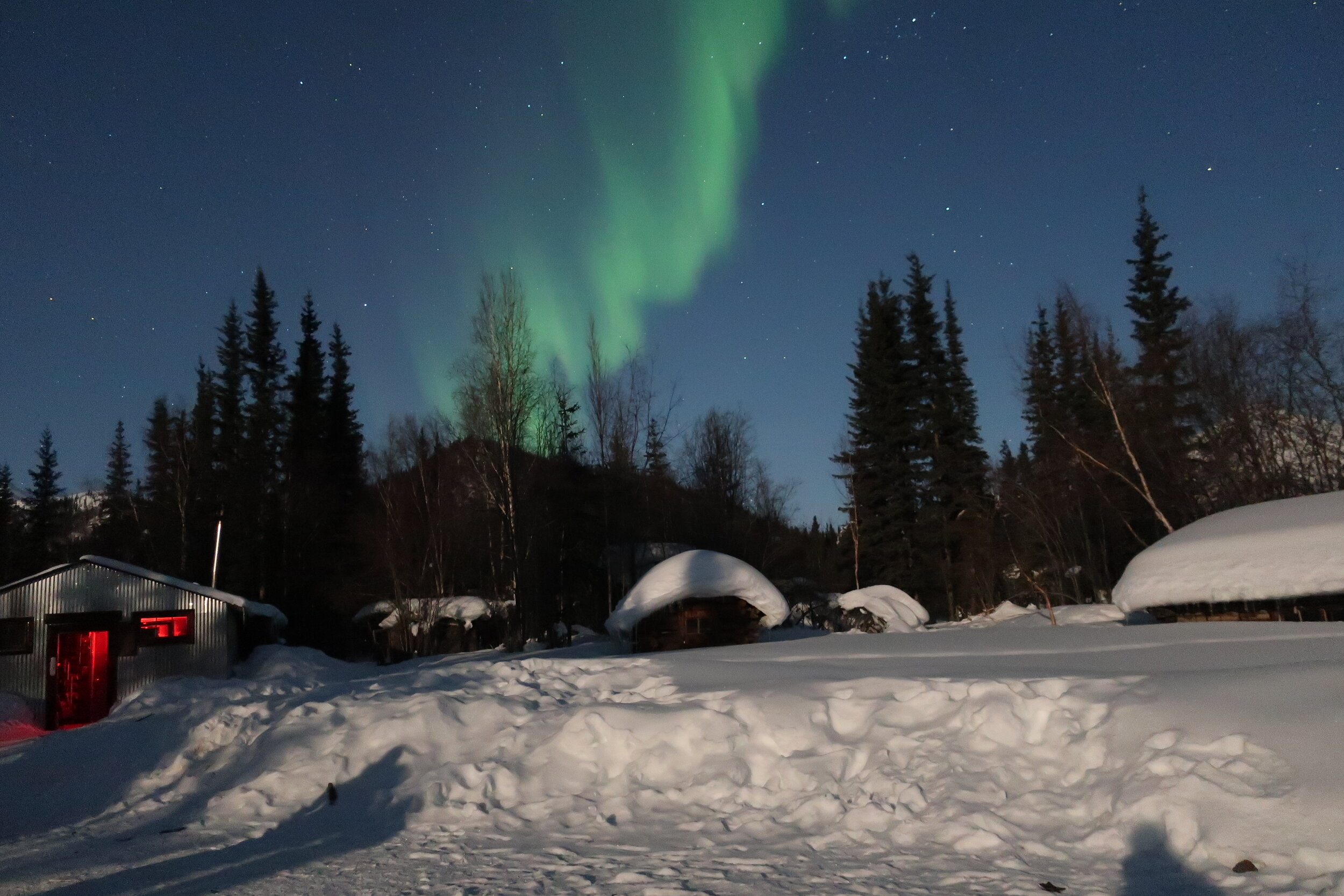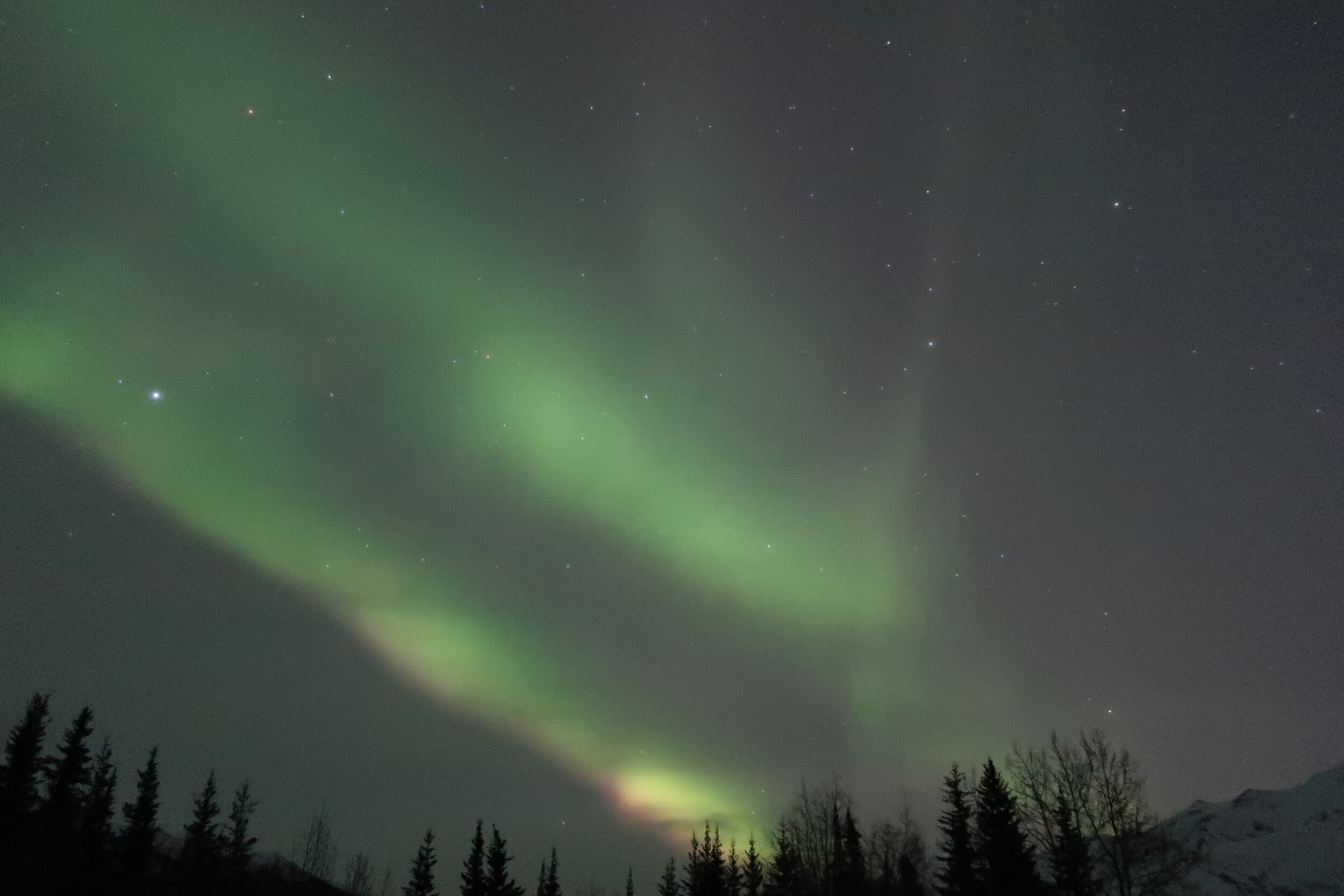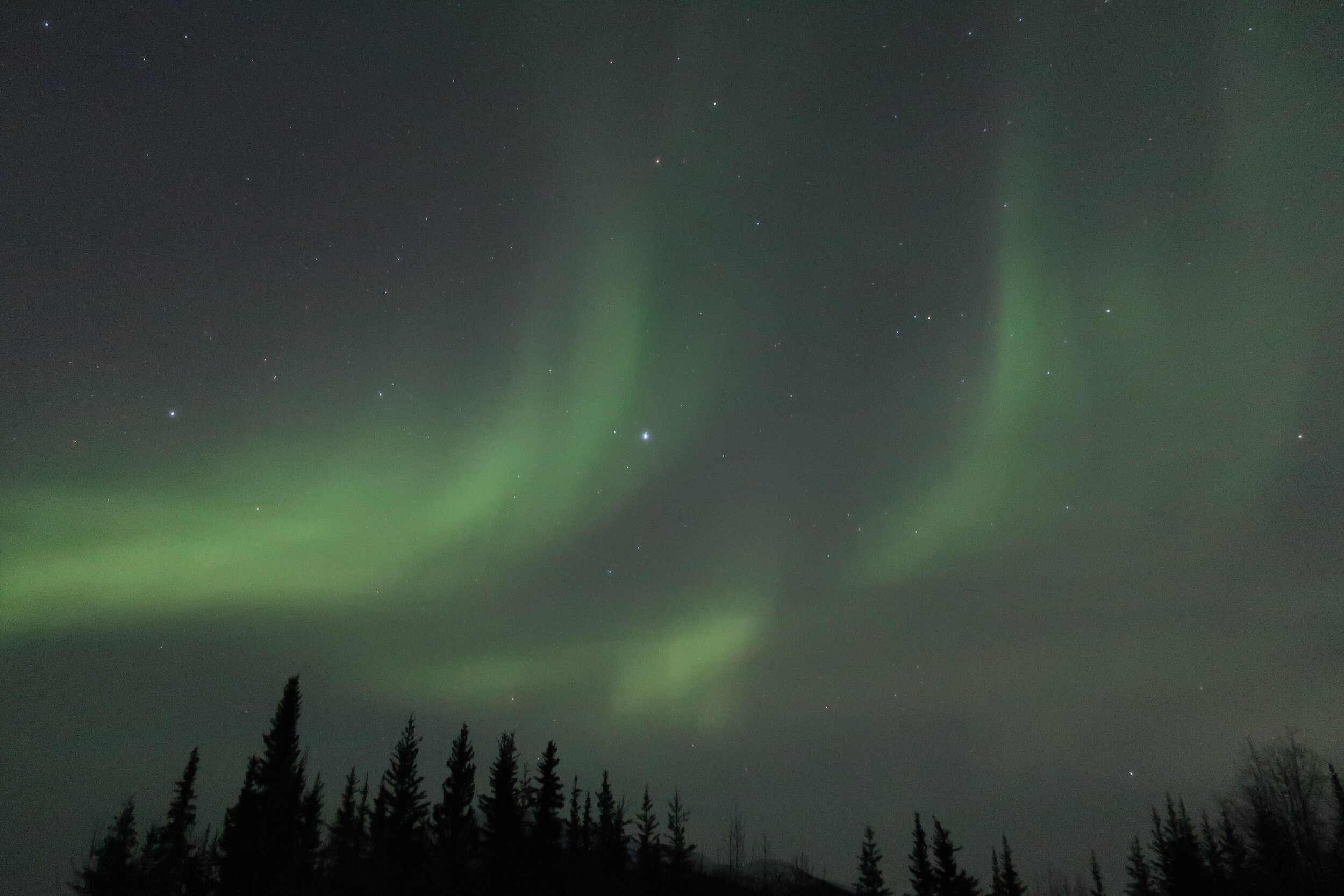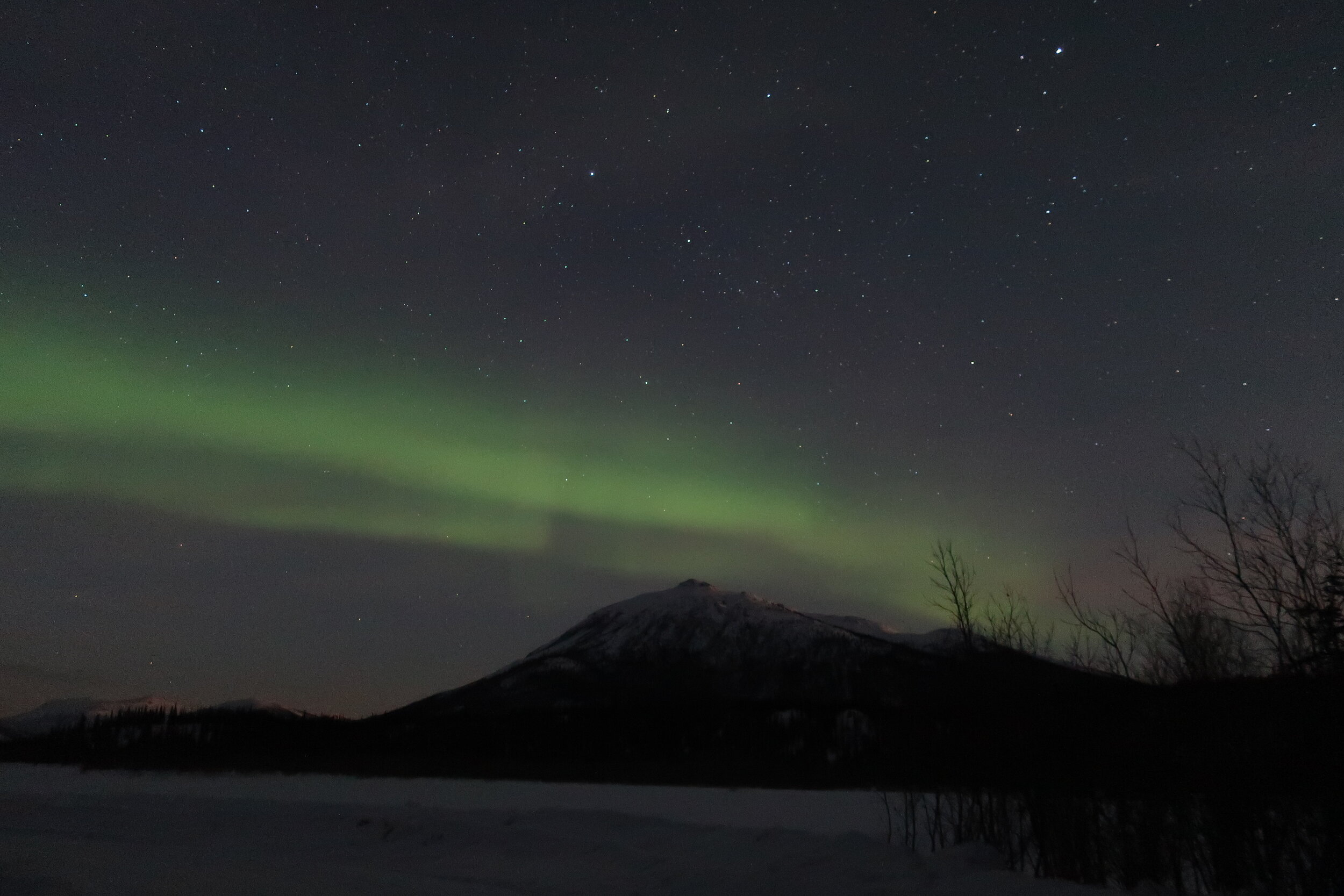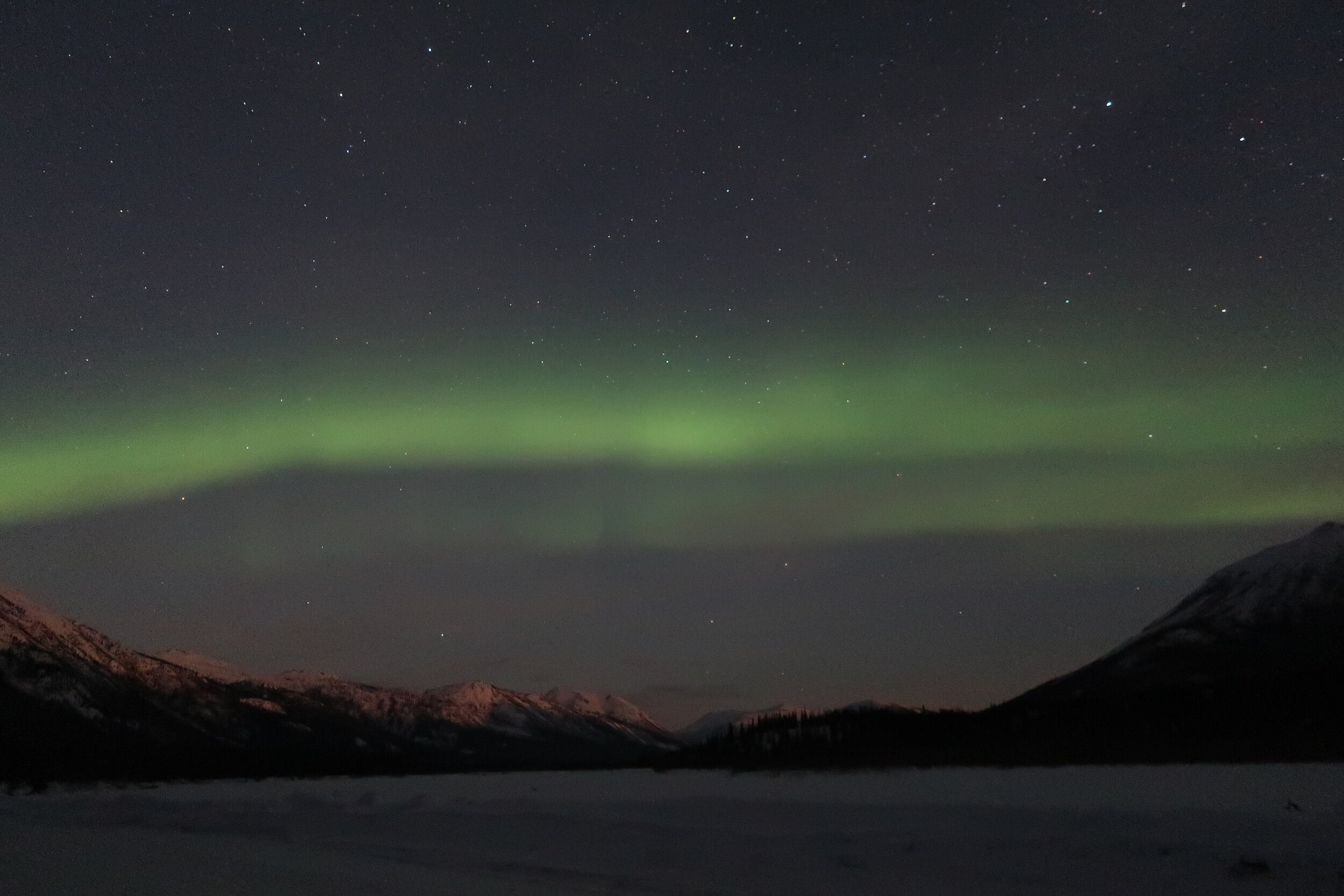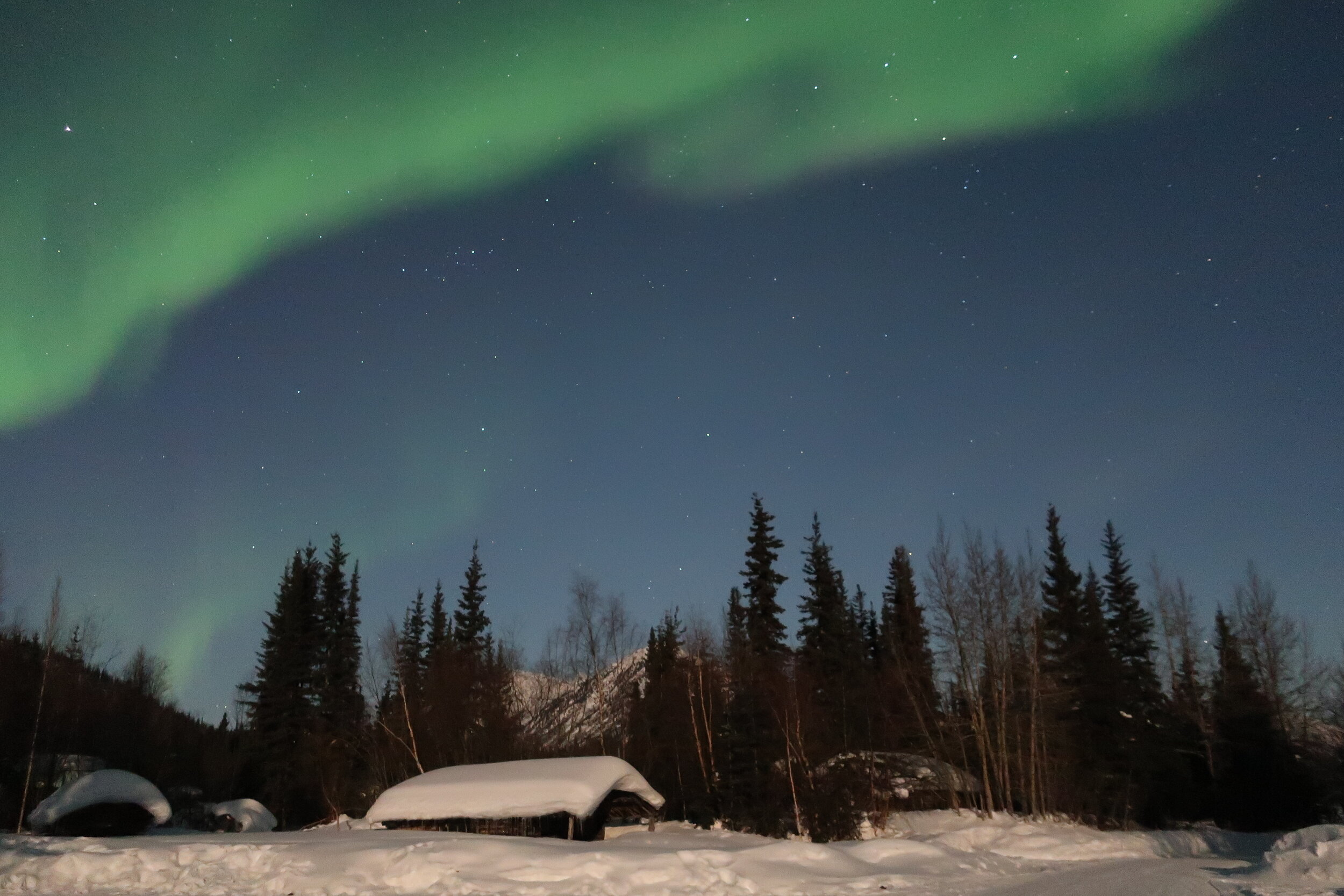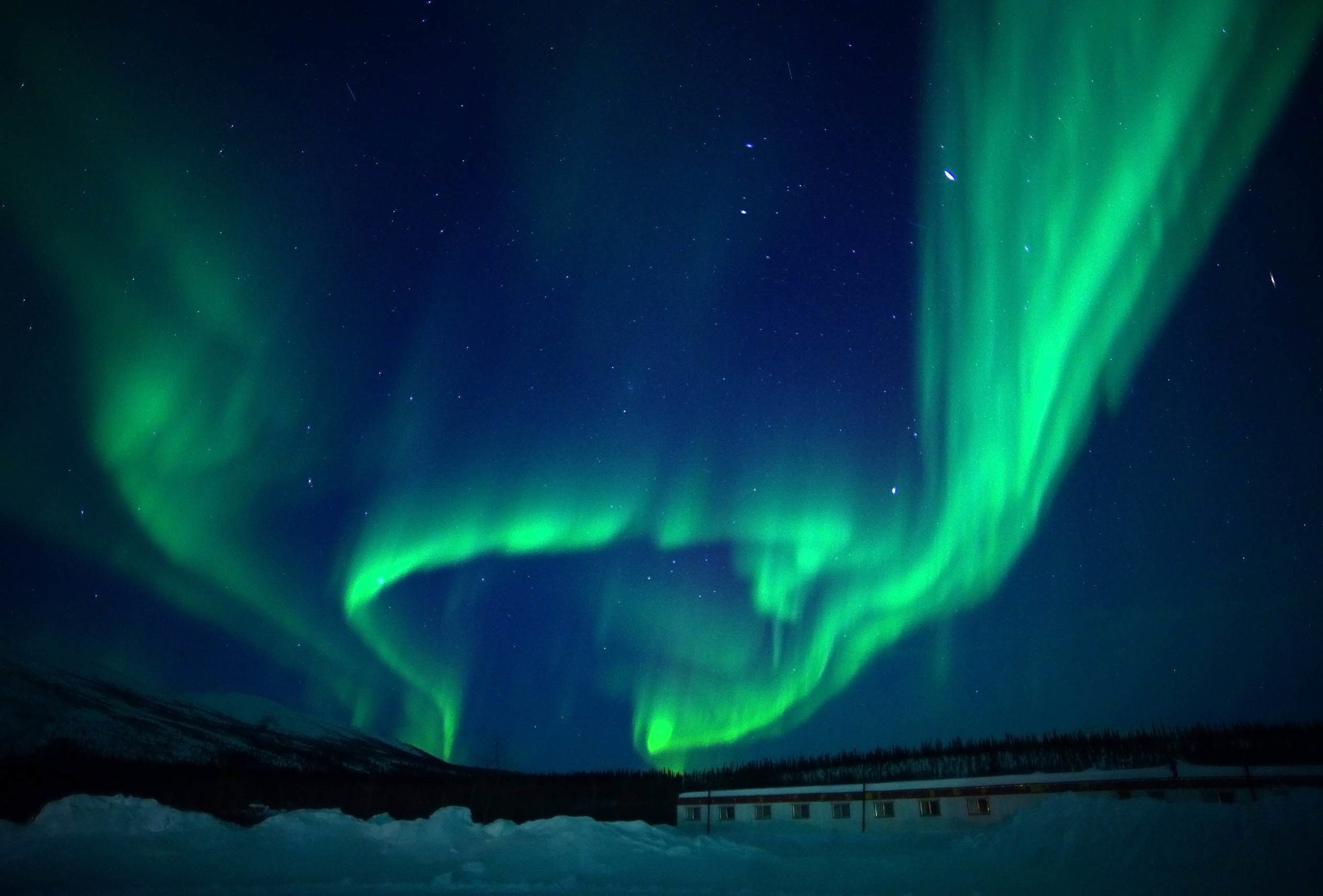Whether you’re watching the aurora from behind the North Inn or Wiseman with us, one thing will usually be true: it’s going to be cold!
No matter where you’re from and what kind of weather you’re used to at home, it can be tough to stand outside in the cold for long enough to spot a great aurora. And there’s no worse feeling than having to leave a great display to go back inside and warm up.
If you come with us to Wiseman, you’ll have access to hot drinks in a heated cabin, as well as a double-barrel stove outside to keep warm. But, you can’t see the aurora from inside. And if you don’t have the right gear, then even standing next to the stove can get chilly--especially for your feet and hands.
If you’re already coming all the way up to see us, make sure you maximize your chances of spotting and enjoying the northern lights.
Pack these coworker-recommended essentials to have the best and most comfortable aurora-viewing experience possible!
Wear These…
Coat
First and foremost, don’t forget to bring a warm coat! (Seriously, you’d be surprised.)
If you’re purchasing a coat specifically for your trip, don’t worry about spending a ton of money. Springing for a Canada Goose parka really isn’t necessary. There are plenty of reasonably priced options that will keep you warm, especially if you layer up.
As you’ll probably notice when you arrive, most coworkers (and Alaskan locals) favor Carhartt bibs and coats--for good reason: they’re affordable, rugged, and will keep you way warm. Even the crews that work along the haul road are often wearing Carhartts, and they’re usually outside working for hours at a time regardless of the weather.
Just one thing: make sure you’re purchasing the workwear, and not the streetwear. While trendy, the streetwear isn’t quite as practical for cold-weather exploring as the workwear is. Specifically, check out the “Extremes” line: these coats are specifically designed for adventuring in Alaska, and the one-piece design of these bibs will block the wind.
If you’re already in Fairbanks without a coat, check out Big Ray’s or Value Village to pick one up last-minute! There are also gear rental spots in Fairbanks where you can pick up a coat and boots for a few days, and return them at the end of your trip.
Boots
We’re sorry to say it, but hiking boots just won’t cut it. Neither will sneakers. Heels and stilettos won’t, either, and actually could be pretty dangerous on the ice. (Again, you’d be surprised.)
Yes, you can buy toe warmers! We definitely recommend them. But toe-warmers work best when you’re also wearing warm, insulated winter boots that’ll keep all that heat in! Most hiking boots, even waterproof ones, simply aren’t built to withstand the cold temperatures (often as low as -30F, sometimes as low as -50F) that aurora-watching demands.
If you’re looking for a branded option, Sorel and Baffin both make really nice cold weather boots, many of which you’ll spot on coworkers during your time here. But, if you’re interested in a discount pair of boots, go with bunny boots (or, officially, “Extreme Cold Vapor Barrier Boots” developed by the U.S. military)--there are a few military surplus stores in Fairbanks that’ll have them at a reasonable price.
And, like we mentioned above, if you don’t want to pop for a brand-new pair of boots, or if you don’t want to waste precious suitcase space, you can always check out the gear rentals in Fairbanks!
Gloves
Gloves are also a necessity, especially for colder nights. There’s nothing more frustrating than having to run inside during an amazing display because your hands (or feet) get cold. And, it could be dangerous, too--frostbite happens quickly here during aurora season.
As you’ll notice is a theme in this article, layering up can help!
Wear a thin, tech-compatible pair of gloves underneath a bulkier gloves or mittens to reduce the chill (and save you from painful dry skin) when you have to take a glove off to take photos on your camera or smartphone.
However, like we said, frostbite is no joke. Even with your under-gloves on, try to minimize time outside of your mittens or thick gloves, and make sure your hands stay in your pockets between photos.
Socks
Wear warm socks! The thicker, the better--as long as they still fit inside your boots. (Definitely make sure you try your boots on over your socks before committing.)
You can also layer ‘em: wear regular crew socks underneath, and put a thicker on over them before putting on your boots.
Carhartt makes these reasonably-priced Arctic wool-blend socks that will go a long way towards keeping your toes nice and toasty.
Bring These…
Head Lamp
Though a head lamp isn’t crucial, it’ll make your aurora-watching experience a lot easier. Part of escaping the urban light shadow is that it gets really dark. So, a headlamp can make, say, a trip to the outhouse a lot smoother.
The only thing you’ll want to keep in mind when selecting a headlamp is to make sure that it has a red light setting.
Why is a red light setting so important? Simply put, it’s because red light preserves your night vision.
We do everything we can to reduce light in Wiseman. Turning on a white light forces your eyes to adjust, and, if you accidentally shine it the wrong way, can force others’ eyes to adjust too. Introducing white light into photos can also ruin your aurora and night sky pictures.
Tripod
Like we said in our article on photographing the aurora, a tripod is essential! Because you have to use such a long exposure to capture the northern lights, getting a clear, crisp shot of the aurora is almost impossible without keeping the camera totally still.
If you already have a camera or a smartphone that you want to use to shoot the aurora, it might be worth picking up an inexpensive tripod like this one. (Don’t forget a smartphone adapter if you’re going that route!)
But if you don’t have the equipment or don’t want to invest, don’t worry. Our guides bring a camera on every aurora viewing trip and can give you details on purchasing the photos from your excursion.
So, there you have it - these are the coworker-recommended basics to wear and bring when you come aurora-watching in Coldfoot! If you’ve already visited and have some essentials that you’d like to share, or if you have questions, drop a comment below!

